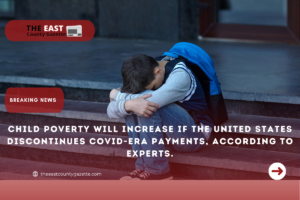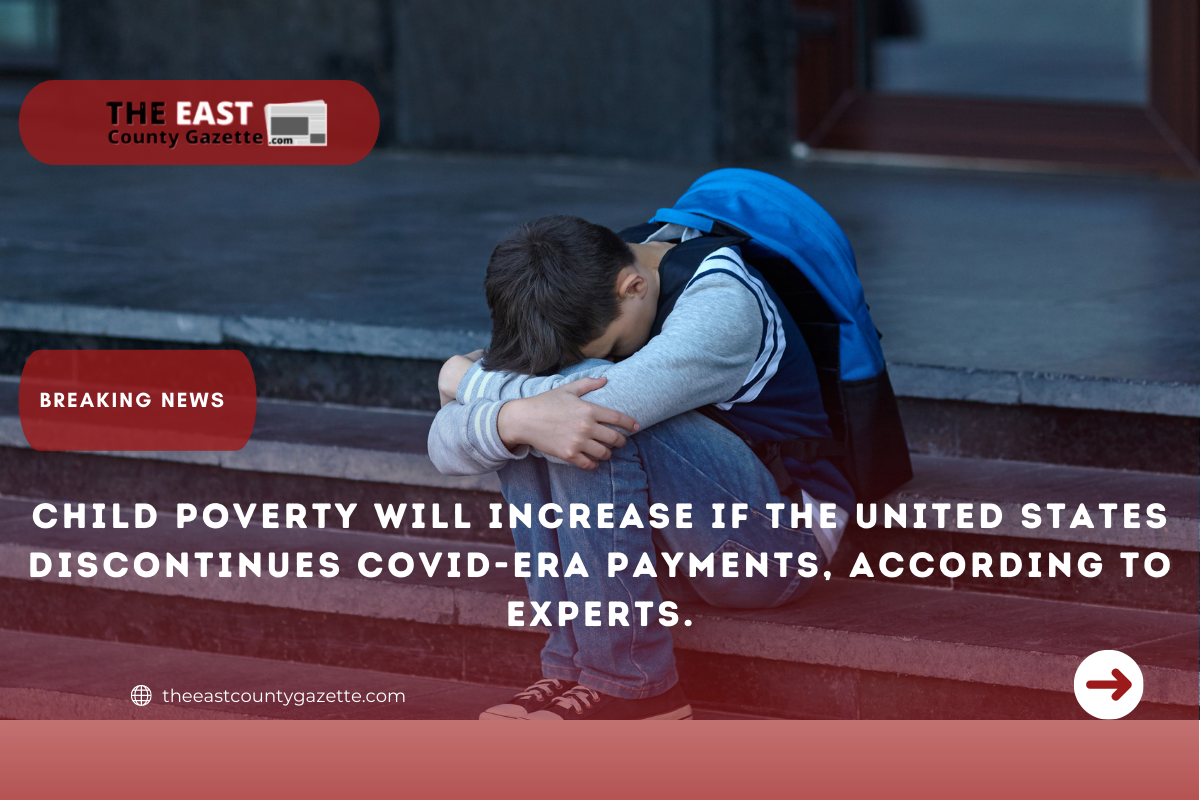Child poverty will increase if the United States discontinues Covid-era payments, according to experts.
During the Covid-19 epidemic, extensions of the social safety net resulted in a significant reduction in child poverty in the United States. However, experts warn that allowing such measures to expire could erase these historic accomplishments.
While the epidemic has put a strain on the well-being of millions of children, new policies have made a significant difference in their well-being.

According to forecasts, the percentage of child poverty would decline from 14.2 percent in 2018 to less than 5.6 percent in 2021, and the rate of severe poverty will be reduced by nearly half, from a high of nearly 50 percent in 2018.
“Child poverty in the United States is not unavoidable,” says the author. According to Lisa Chamberlain, professor of pediatrics at Stanford School of Medicine and co-author of a paper published on Monday in the journal Jama Pediatrics, it is a choice. A question of political will, rather than technical ability, is at issue here, according to the author.
The child tax credit, which was the principal driver of these reforms, is projected to have reduced child poverty by 40 percent. Beginning in July, it began distributing monthly checks to families. Most of these monies were spent on basic essentials such as food, clothing, shelter, and utilities. A small portion of these expenditures went toward education and research.
Other safety-net expansions made possible by the pandemic included three stimulus checks, a moratorium on evictions, increased unemployment benefits, and increased funding for food, through the Supplemental Nutrition Assistance Program (Snap), and for housing, through the Housing and Urban Development Department.
According to Chamberlain, “the proliferation of all of the things has truly resulted in a historic drop in child poverty.”
According to a study, roughly a third of children would be living in poverty if they did not receive this assistance.
Megan Curran, policy director at Columbia University’s Center on Poverty and Social Policy, said the benefits “have made a huge difference – not only in preventing what could have been the worst-case scenario in terms of poverty increases, but also in resulting in dramatically lower poverty rates than we’ve seen in decades.”
According to her, the child poverty rate in 2020 was the lowest since the US Census Bureau began recording it in 1960s, and it is possible that the rate in 2021 was even lower. “So that’s a big deal.”
After the child tax credit ended in January, an estimated 3.7 million children were forced into poverty, a 41 percent rise from December, according to the Center for Economic and Policy Research (CERPR).
According to Curran, “there was effectively a cliff between December 2021 and January 2022.” “Families have undoubtedly suffered in the last two months as a result of the payments not being made.”
Families are once again battling to make ends meet by purchasing food, paying rent, and keeping the lights on, particularly as the cost of food and electricity continues to rise. “It’s a double whammy for them because they’re losing their payments on top of having to pay higher prices for those necessities,” Curran explained.
A bill to prolong the credit, known as the Build Back Better Act, was defeated in the United States Senate amid opposition from Democratic senator Joe Manchin, who mentioned the child tax credit as one of his reasons for opposing the legislation.
There is a significant economic benefit to reducing child poverty, according to recent studies. Hunger, bad health, a lack of education, and a lack of work opportunities are all consequences of poverty.
“Not having adequate food, not having a stable place to live – all of this interferes with their capacity to fully engage in school,” Chamberlain explained. ” This ability to participate in the classroom and to participate in their educational process is what ultimately leads them to their ultimate potential of being able to hold down a solid job and contribute to society.
According to the National Academy of Sciences, child poverty costs the United States between $800 billion and $1.1 trillion per year in lost adult productivity as well as increased expenditures of health and criminal justice spending, among other things. According to academics, poverty reduction strategies have strong moral and economic justifications.
Children’s poverty, according to Curran, “really costs us an amazing amount of money every year as a country.” “A significant reduction in child poverty benefits children on a personal and familial level, but it also makes sound economic sense from a purely economic standpoint.”
The credit’s detractors have argued that it will discourage families from working, but research has found that it has had no obvious impact on employment.
In reality, the money, according to the researchers, might be used for childcare, which would allow parents to work more hours – notably during the pandemic, when many informal carers, such as grandparents, were lost to death or infirmity.
According to Chamberlain, “the amount of incapacitation from Covid for that has been quite tough – and we have seen tremendous numbers of women leave the industry.”
Achieving such progress is now jeopardized due to the expiration of the child tax credit.
“I wouldn’t argue that it completely eliminates the gains,” Chamberlain added. “It takes away our ability to continue to earn those advantages.”
During the months in which they received the credit, the families had more food, more stable housing, less stress, and their children benefited from larger developmental benefits.
It is possible that this will continue to occur if they are successful in extending the deadline.
Curran believes that the program’s early success serves as a proof of concept, particularly because it is unusual for a single policy to produce such clear and dramatic results, as it did.
‘We’ve demonstrated now that all of this — high inequality, rising inequality – is absolutely reversible,” she explained. “We now understand what works, and we have witnessed it working.”

